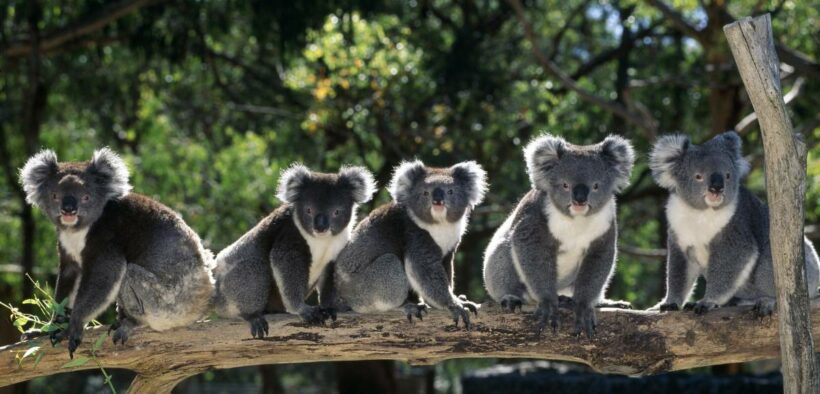Legal loopholes are killing Koalas in the Sydney Basin
Share

Koalas are in imminent danger in the Sydney Basin Bioregion, and in some areas – including the Shoalhaven and Central Coast Local Government Areas (LGAs).
This iconic species is already all but extinct, confirms a new report commissioned by the Sydney Basin Koala Network (SBKN), prepared by Biolink.
Legal protections are also woefully inadequate according to a companion report by the Environmental Defenders Office (EDO).
Koalas are facing multiple threats importantly from the cumulative effect of hundreds of development approvals causing habitat loss, modification and fragmentation, along with vehicle strikes, dog attacks, stress-induced disease and significant weather events such as drought, fire and floods.
The six focal areas of significance identified as key to improving the fate of koalas in the Sydney Basin include Campbelltown/Wollondilly, Liverpool, Sutherland, Wingecarribee (Southern Highlands), Hawkesbury, and Cessnock/Lake Macquarie.
“There are alarm bells going off across the region. Koala numbers in the Sydney Basin overall have declined by an estimated 22 per cent in the past 20 years, and NSW legislation and policy has continued to allow their decline,” said Jeff Angel, Director of Total Environment Centre (TEC).
“Areas with the most significant koala populations are not being protected from development and other threats, despite their looming extinction.”
However, the new legal analysis confirms there’s an opportunity to create an immediate impact and halt the decline of koala populations across the state by:
- Ensuring laws apply to all koala habitats by adopting consistent, comprehensive mapping across NSW as a matter of urgency, to identify key areas for conservation so koala populations can recover and grow.
- Urgently reforming state laws to deliver certain protection and strong safeguards for koalas in all environmental, planning and land-clearing legislation.
“After extensive review, it’s clear that our laws are not up to the task of protecting koalas and their habitat. We have identified multiple opportunities to strengthen koala laws and policies,” said Cerin Loane, EDO Special Counsel, Nature.
“We need urgent reform together with ongoing support for government agencies and private landholders to identify koala habitat, assess threats, and properly implement the rules.”
While the full impact of the Black Summer bushfires is yet to be established, the loss of koala habitat from fire (such as 78.7% in the Hawkesbury) has seen habitat closer to urban areas become critical to recovery, as protection against fire is prioritised in these areas.
“Identifying and protecting koala habitat corridors in these areas will assist koala movement and support population expansion. These corridors should be protected in much the same way as infrastructure and housing during bushfire events,” said Amanda Lane, Biolink Ecologist.
Australia’s largest wildlife organisation, WIRES, is funding the SBKN project.
“WIRES’ dedicated volunteers and Emergency rescue teams are increasingly responding to calls from the public about displaced, injured and orphaned koalas and we are pleased to be able to add our full support to TEC’s Sydney Basin Koala Network initiative,” said Leanne Taylor, WIRES CEO.
The organisation funding the SBKN project has received 617 calls from across NSW regarding koalas and more than half of these (337) were for koalas in the Sydney Basin area.
“No government to date has provided koalas with adequate protection. Current local and state environment and planning laws are failing our koalas: there are too many regulatory gaps and too much flexibility in decision-making, and the NSW Koala Strategy is not legally binding,” added Angel.
Menchie Khairuddin is a writer Deputy Content Manager at Akolade and content producer for Third Sector News. She is passionate about social affairs specifically in mixed, multicultural heritage and not-for-profit organisations.

























